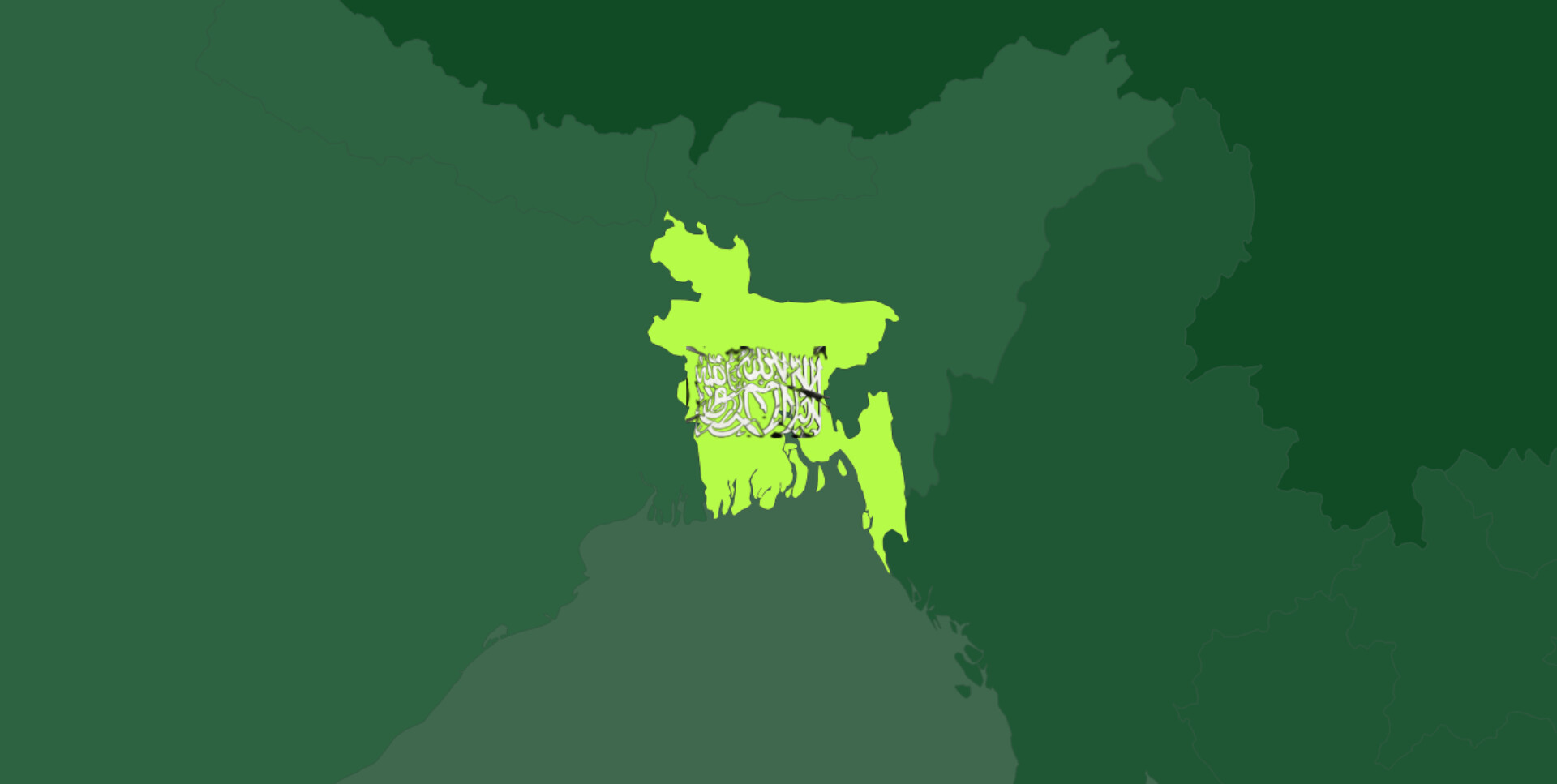
✍️ Sudip Aditya
Bangladesh — once widely seen as a model of moderate Islam and steady economic progress in South Asia — is now experiencing deep political upheaval and an alarming resurgence of Islamist militancy. This resurgence, security analysts warn, is not only destabilising for Bangladesh itself but poses a direct threat to India’s eastern frontier — especially West Bengal and the North Eastern (Seven Sisters) states.
Political Upheaval and the Power Shift (2024–2025)
Mass protests in 2024 led to the fall and exile of former Prime Minister Sheikh Hasina and created a vacuum in Dhaka’s political order. The ensuing interim government has reopened many political files, revoked earlier bans on some parties, and launched prosecutions that have further polarised the landscape. Major international outlets and policy institutes report that this period of turmoil has sharply degraded internal security and created opportunities for extremist actors to re-organise.
Militant Groups Active or Re-emerging
Long-standing Islamist groups — including Ansarullah Bangla Team (ABT) and other extremist networks with historical links to regional jihadist movements — have been reported to remain active inside Bangladesh. There are documented arrests and intelligence reports pointing to sleeper cells, recruitment through madrasa networks and online propaganda, and isolated violent incidents attributed to these groups. Recent law-enforcement actions in India and Bangladesh have also mentioned ABT operatives being detained in Indian states bordering Bangladesh.
Allegations of External Support and Coordination
There are serious allegations circulating in security briefings and some media reporting that foreign jihadist groups — including transnational actors inspired by or linked to ISIS, Lashkar-e-Taiba, Hamas, and others — sought to take advantage of the 2024 political crisis in Bangladesh. Some analysts claim these groups attempted to destabilise the Sheikh Hasina government and that, after the political change, several extremist networks intensified activity inside Bangladesh. These assertions remain contested in the public record and have not been established as uncontested facts by a single authoritative source. Where reporting exists, it tends to rely on a mix of intelligence leaks, unnamed officials, and regional analysis rather than on declassified documentary proof.
Claims of Arms Flows from Turkey and Pakistan — What We Know and What Is Alleged
Point about large quantities of arms moving from countries such as Turkey and Pakistan into Bangladesh is echoed in some regional commentary and contested media accounts. A number of reports and opinion pieces have suggested irregular weapon movements in South Asia and raised concerns about external support networks; at the same time, official denials and lack of transparent evidence make these claims hard to verify publicly. Some outlets have reported denials from states accused of supplying arms. In short: there are allegations and alarm among analysts about external arms flows, but open-source verification remains limited and sometimes contradictory. Readers should treat these claims as serious but not yet conclusively proven.
The Threat to India — Assam, the Seven Sisters and West Bengal
India’s long, porous border with Bangladesh (over 4,000 km) is the key vulnerability. Security officials and analysts warn that if militant groups inside Bangladesh receive new energy — whether through local recruitment, refugee-camp radicalisation, or clandestine arms supplies — they could attempt cross-border operations, infiltration, or the formation of sleeper networks in Assam, Tripura, Meghalaya, Mizoram, Manipur, Nagaland, Arunachal Pradesh and West Bengal. Past incidents (for example, militant networks discovered in West Bengal manufacturing explosives) show how such cross-border threats can materialise. Given the political disruption in Dhaka and reports of renewed militant organising, New Delhi’s concern is understandable and high.
Rohingya Camps, ARSA and the Border Dimension
The Rohingya camps in Cox’s Bazar continue to be a complex security environment. Armed Rohingya groups (like ARSA) and criminal networks have, at times, operated in and around the camps; these dynamics intersect with trafficking and radicalisation risks. Policy analysts flag the possibility that armed actors could use these spaces as staging or recruitment grounds, complicating Bangladesh’s capacity to secure its borders.
Why Islamic Extremism Is Resurgent
Political vacuum & polarisation: Rapid political change, mass protests, and the fall of a long-standing leader have weakened state capacity and created openings for non-state actors.
Economic stress and youth alienation: High unemployment and inequality increase vulnerability to recruitment.
Cross-border criminal economies: Smuggling (arms, cattle, narcotics) finances illicit networks and blurs lines between criminals and militants.
Transnational linkages: Ideological and logistical ties with regional and global terrorist organisations enable learning, funding and supply-chains (though the scale and exact provenance of such support vary in reporting).
What India Should and Could Do
Intelligence cooperation: Deepen actionable intelligence-sharing with Dhaka and strengthen joint border management.
Targeted policing and legal action: Support investigations into transnational networks while respecting legal standards for prosecution and evidence.
Border infrastructure and community resilience: Combine enhanced surveillance and fencing where needed with investments in local development and community policing in border districts.
Counter-radicalisation: Monitor online propaganda, support madrasa reform and provide credible alternative narratives for youth.
Diplomacy: Use coordinated diplomatic pressure to ensure Bangladesh cracks down on suspect external supply-lines and militancy financing, while supporting Dhaka’s political stability.
A long-term activity by Ansarullah Bangla Team, alleged interventions by transnational jihadist groups around the 2024 upheaval, and reports of incoming arms flows from countries such as Turkey and Pakistan — captures why analysts are deeply worried. Some of these points are documented (for example, the political upheaval in 2024–25, ABT’s continued presence, and arrests linked to militant activity). Other elements (coordinated foreign operations to remove Sheikh Hasina, or large-scale arms shipments from specific states) remain contested or are reported primarily in intelligence/analytical accounts rather than fully public, independently verified evidence. Given the stakes for India’s North East and West Bengal, both vigilance and careful verification are necessary: policy must be driven by solid intelligence and multilateral pressure as much as by concern.